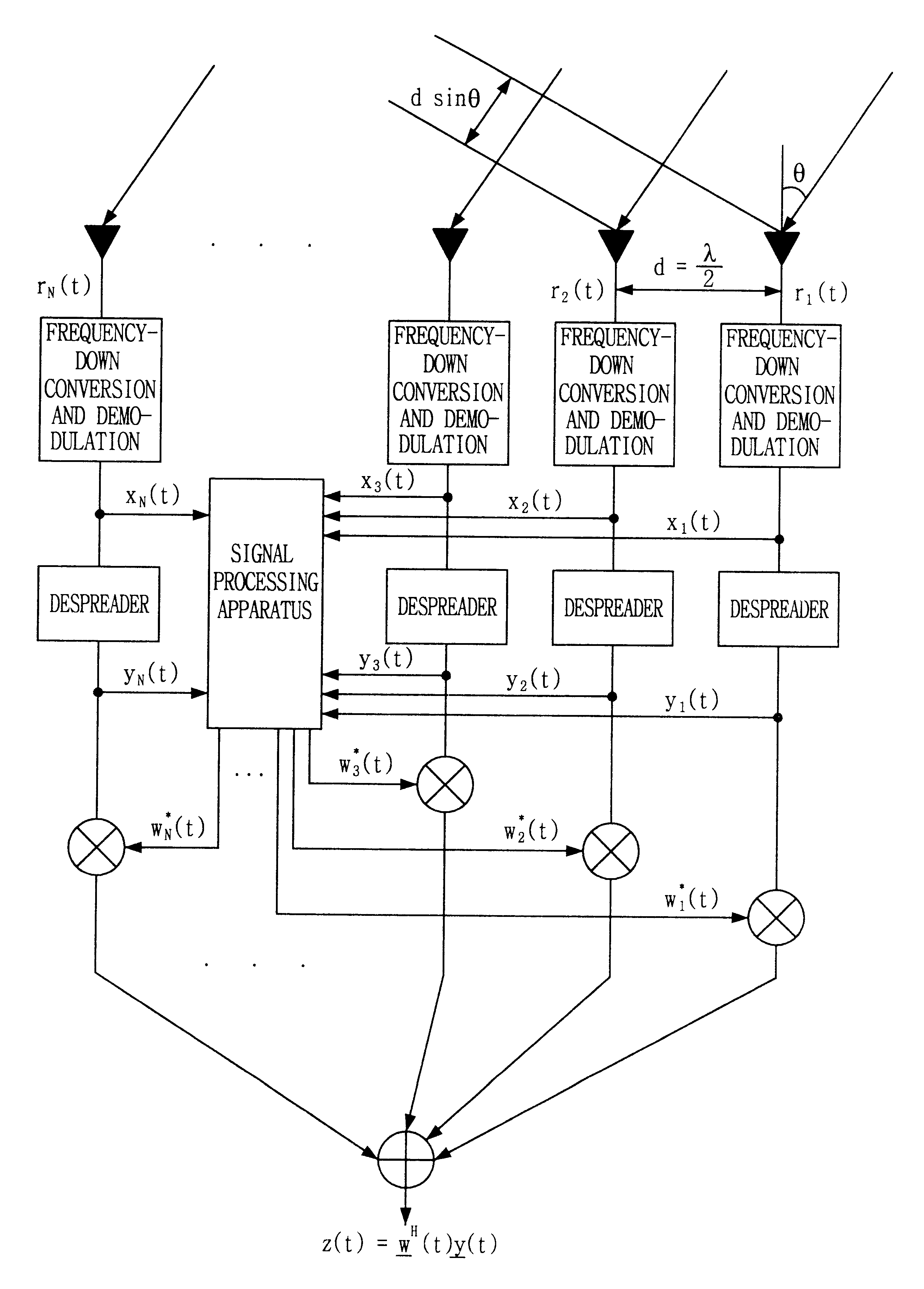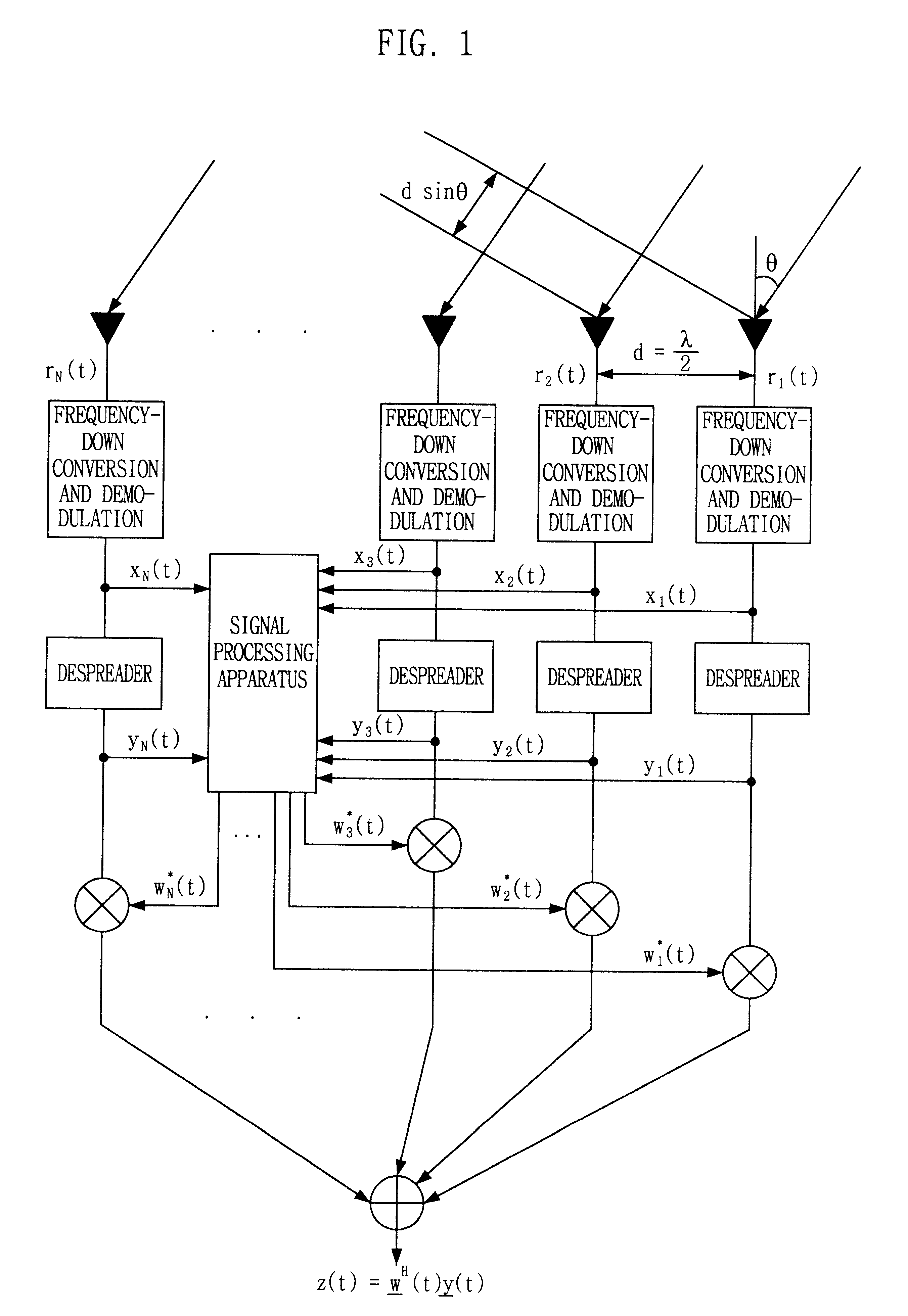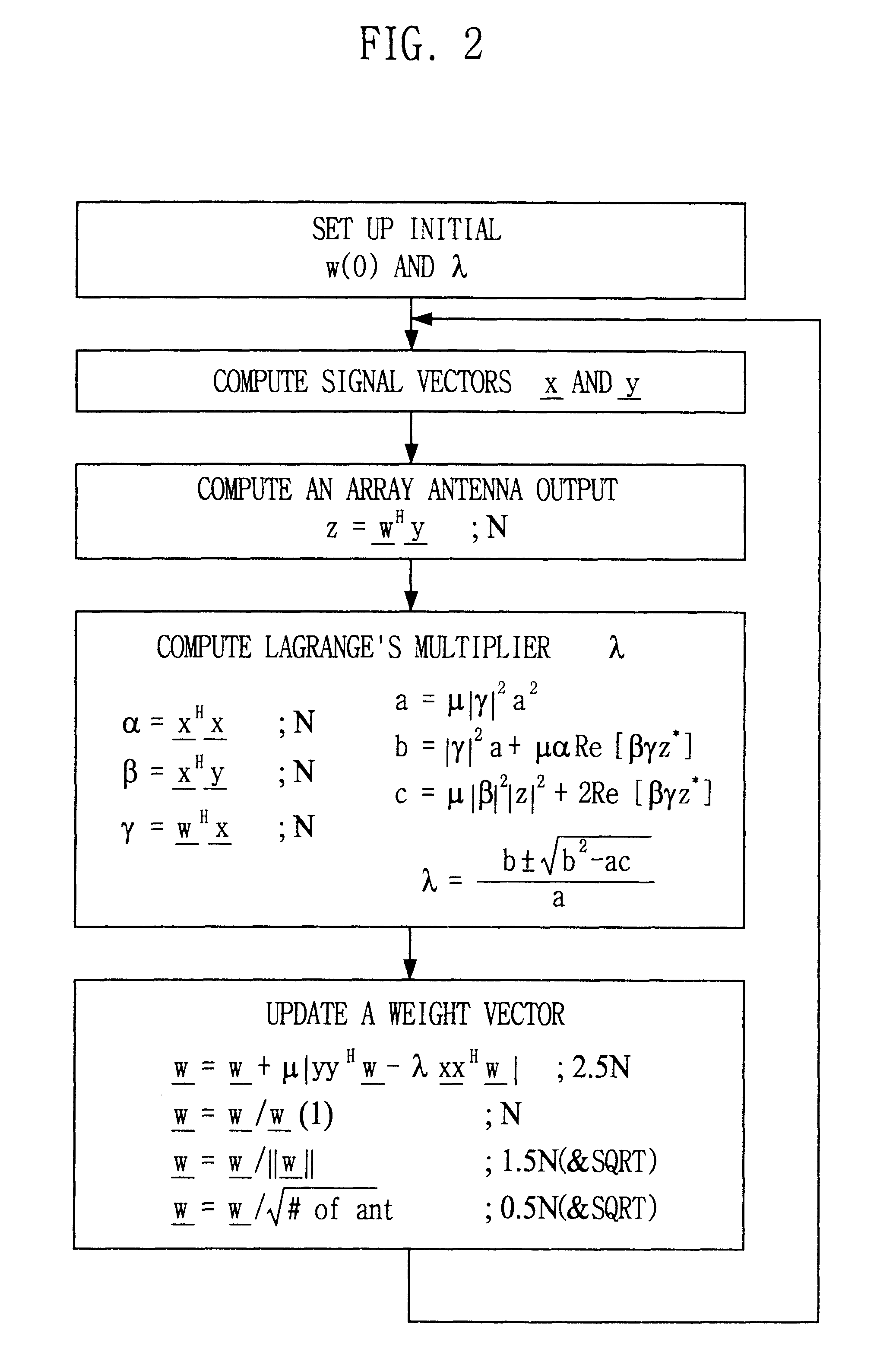Signal processing method and apparatus for computing an optimal weight vector of an adaptive antenna array system
a signal processing and weight vector technology, applied in diversity/multi-antenna systems, direction finders using radio waves, instruments, etc., can solve the problems of inability to cope with the rapid growth of demand for current techniques, inability to achieve real-time complexity without loss of accuracy, and many serious difficulties in applying the theory of [1] to the actual wireless communication world
- Summary
- Abstract
- Description
- Claims
- Application Information
AI Technical Summary
Benefits of technology
Problems solved by technology
Method used
Image
Examples
first preferable embodiment
As the first preferable embodiment, this invention discloses a method of computing the weight vector with an eigenvector corresponding to the largest eigenvalue of the eigen-problem (3) by updating the weight vector through the procedure of (7) at each snapshot such that (5) can be maximized, which is an application of the prior art, Lagrange's formula. The adaptive procedure based on the Lagrange's formula can be applied to mobile communications through the three steps as follows:
Set up an initial guess for the weight vector w. For an efficient convergence, it is recommended have the normalized and received signal vector after the despreading procedure as the initial value, i.e., y(0) / .parallel.y(0).parallel. where .parallel.y(0).parallel.=(y.sup.H (0)y(0)).
Update the autocovariance matrices, R.sub.x (pre-correlation autocovariance matrix) and R.sub.y (post-correlation autocovariance matrix), with the received signal vector x(n) (a pre-correlation signal vector) and y(n) (post-co...
second preferable embodiment
In this preferable embodiment, an adaptive procedure of computing an eigenvector corresponding to the smallest eigenvalue of (4). The technique ultimately searches for the same weight vector that converges to an eigenvector corresponding to the largest eigenvalue of (3). To find the target eigenvector corresponding to the smallest eigenvalue of (4), the signal index x representing pre-correlation and y representing post-correlation are interchanged in and the sign of (11) is changed as follows:
w.rarw.w-.mu.[R.sub.x w-.lambda.R.sub.y w] (12)
The adaptive procedure of finding an eigenvector corresponding to the smallest eigenvalue of (4), instead of that corresponding to the largest eigenvalue of (3), can be summarized as follows:
Set up an initial guess w.
Update the autocovariance matrices, R.sub.x denoting a pre-correlation autocovariance matrix and R.sub.y denoting a post-correlation autocovariance matrix, with the received signal vector x(n) denoting a pre-correlation signal vect...
third preferable embodiment
The simplified adaptive procedure of computing the weight vector with an eigenvector corresponding to the largest eigenvalue of (3), excluding all the matrix operations, can be summarized as follows:
Set up an initial guess of the weight vector w. As in the other preferable embodiments, for a fast convergence, the received signal vector obtained at the output of the despreader, i.e., y(0) / .parallel.y(0).parallel., is recommended for the initial guess where .parallel.y(0).parallel.=(y.sup.H (0)y(0)).
Compute the Lagrange multiplier .lambda. at the present snapshot from the present weight vector w, the received signal vectors x representing pre-correlation RX signal vector and y representing post-correlation RX signal vector, and a preset adaptive gain .mu. as follows: ##EQU10##
where a=.mu..vertline..delta..vertline..sup.2.alpha..sup.2, b=.vertline..delta..vertline..sup.2.alpha.+.mu..alpha.Re[.gamma..delta.z*] and c=.mu..vertline..gamma..vertline..sup.2.vertline.z.vertline..sup.2 Re[....
PUM
 Login to View More
Login to View More Abstract
Description
Claims
Application Information
 Login to View More
Login to View More - R&D
- Intellectual Property
- Life Sciences
- Materials
- Tech Scout
- Unparalleled Data Quality
- Higher Quality Content
- 60% Fewer Hallucinations
Browse by: Latest US Patents, China's latest patents, Technical Efficacy Thesaurus, Application Domain, Technology Topic, Popular Technical Reports.
© 2025 PatSnap. All rights reserved.Legal|Privacy policy|Modern Slavery Act Transparency Statement|Sitemap|About US| Contact US: help@patsnap.com



